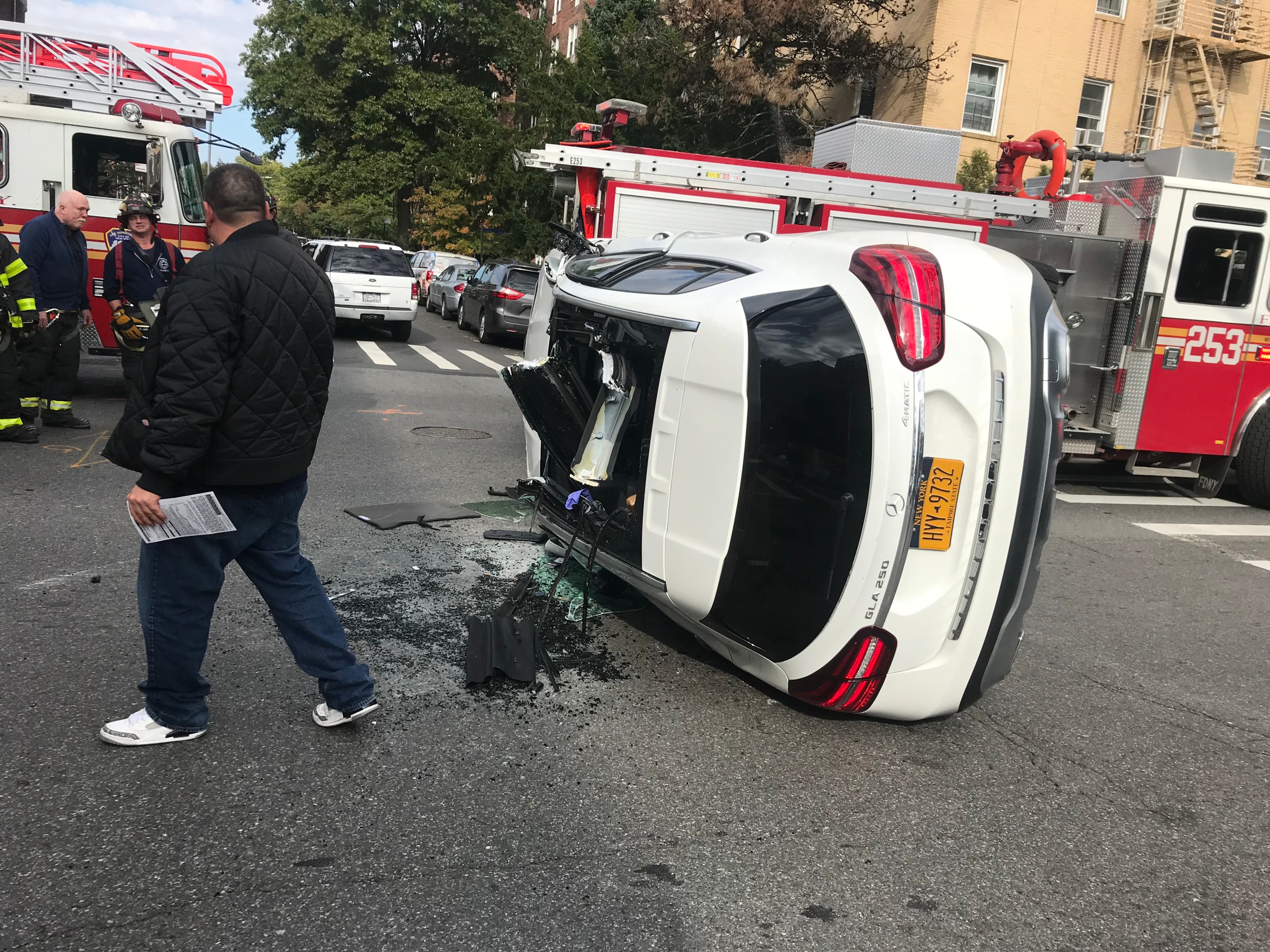To save money, Mayor de Blasio is postponing — or is it terminating? — his "Placard Abuse Enforcement Team,” saving $400,000 in this fiscal year and $800,000 a year thereafter. The move would further congest and terrorize our streets, except that the team, in the stunted tradition of past mayoral placard pronouncements, never did anything to fight the catastrophe of illegal parking by an entitled class of city employees with plastic "No tickets for me" passes on their dashboards.
New York City will postpone the DOT's "Placard Abuse Enforcement Team," saving $400,000 in FY20 and $800,000 in FY21 and out years
— Anna Sanders (@AnnaESanders) April 16, 2020
All the same, the massive fiscal hemorrhaging from COVID-19 demands disruptive thinking. In that spirit, I offer a way to conserve municipal resources and make streets safer: Disband the NYPD’s Collision Investigation Squad.
The C.I.S., a unit of NYPD’s Highway Division staffed with officers ostensibly trained in collision forensics, responds to fatal vehicle crashes in New York City, plus a sliver of "serious injury" crashes. To what end? Almost none I’ve been able to discern in my decades studying and decrying traffic violence.
C.I.S. reports, replete with crash geometries, vehicle speeds inferred from skid marks and such, aren’t publicly available. NYPD sees to it. Yes, there are exceptions. In 2000, and again earlier this year, police officials grudgingly released some C.I.S. reports of recent fatal bicycle-vehicle collisions, enabling advocates (2000) and a crusading journalist (2020) to document that in most of the fatalities, the fault lay with the driver, not the cyclist.
Such surfacings are rare. Concomitant with keeping each year’s crash reports under lock and key, the NYPD Highway Division produces no annual digest aggregating and distilling the individual analyses. Is driver speeding the number one scourge of pedestrians and cyclists? Or is it red-light running? Perhaps driver distraction? What about aggressive driving? Tantalizingly, the C.I.S. reports could tell us the relative frequencies, informing public policy and enriching civic discourse about traffic violence. If the NYPD didn't bury them.
Of course, it’s essential that someone in an official capacity go to each critical crash scene to secure and collect vital evidence. But it should not be the NYPD, a bureaucratic, hidebound organization laden with costly layers of supervision and saturated, top to bottom, with a manifest bias against the most vulnerable road users (51 percent of cops live in the suburbs — more, if you count Staten Island — and an even larger majority of officers are believed to get to work in a car).
Street-safety advocates, myself included, have worked for years to reform the C.I.S. Experience has proven it to be a fool’s errand. Whether from habit, windshield ideology, standard-issue paramilitary antipathy to public engagement or simply mayoral laziness, NYPD will never open the work of the squad to public purview.
Moreover, so far as I’ve been able to determine, the squad has never “shown up” as a factor in policy-making. C.I.S. brass do not testify at City Council hearings on traffic safety. They do not attempt to counter the police department's constant victim-shaming, including false narratives routinely propagated by precinct cops that blame pedestrians and cyclists for their own demises. From time to time, the squad’s work does figure in criminal prosecutions of dangerous driving, but these instances are pitifully infrequent. Indeed, C.I.S. investigations seldom lead to charges even when it couldn't be more clear that the driver erred egregiously. In short, the squad's work informs little and deters nothing.
It’s time, then, to replace the C.I.S. with a civilian unit located outside of the NYPD. The new unit would be staffed by representatives of the departments of Transportation and Health and employees of the Office of the Chief Medical Examiner who are versed in science and trained to check their biases at the door.
The new unit could also include the few C.I.S. detectives who have proven themselves to be straight shooters, based on testimony from victims' attorneys and representatives of crash-survivor organizations such as Families for Safe Streets.
The potential budget savings could easily exceed $1 million a year. I combed the city’s FY2020 budget but couldn’t find expenditures specific to the C.I.S. Instead I prorated former NYPD Commissioner James O’Neill’s 2019 price tag of $2 million for 15 new C.I.S. detectives (an idea he opposed) to estimate that staffing the current 26-person squad costs $3 to $4 million annually. Converting its structure from police to civilian should reduce that cost by a quarter to a third if not more.
The new Interdepartmental Crash-Analysis Team's first order of business could be to distill the past decade’s C.I.S. reports into a treatise of crash causation and culpability. This document would go well beyond previous groundbreaking NYC fatal pedestrian and cyclist crash analyses by including narrative accounts of each fatality. Not only would this ensure that the summary data actually line up with the underlying crash facts; it would also make the document a page-turner — gripping enough to embed dangerous driving’s ongoing slaughter and theft of our streets more firmly in the public’s mind and on policymakers’ agenda.
So let’s disband the Collision Investigation Squad. And with it, let’s bury the illusion that the NYPD has any role to play in protecting New Yorkers from killer-driving. We can save money and serve safety at the same time.






